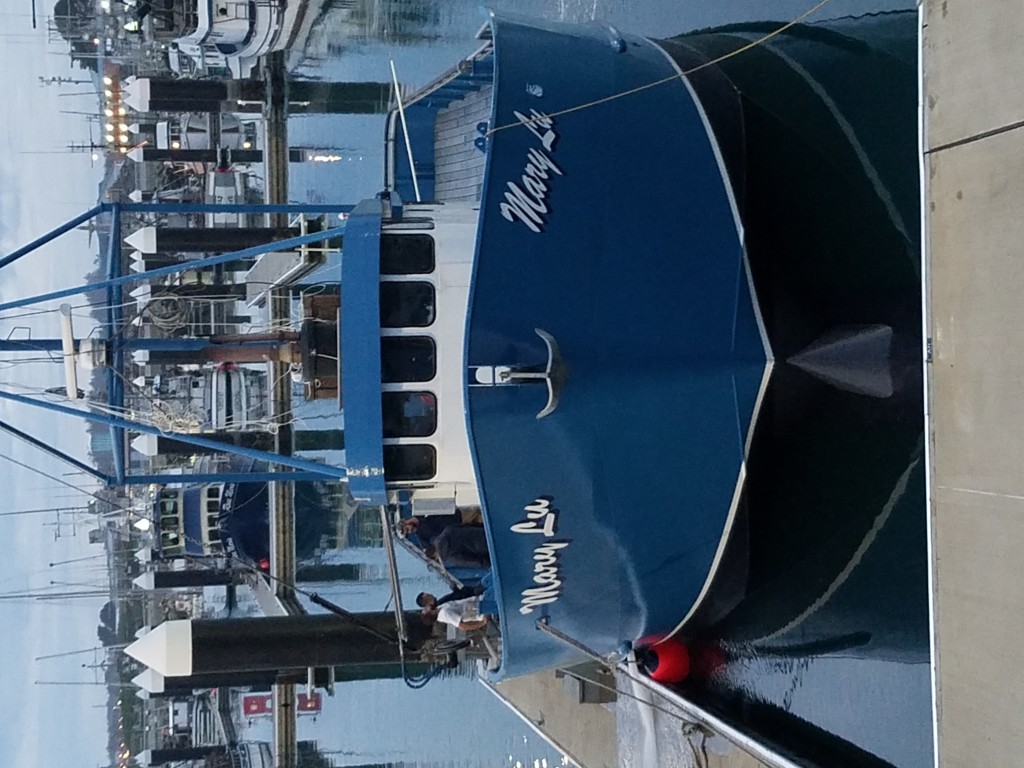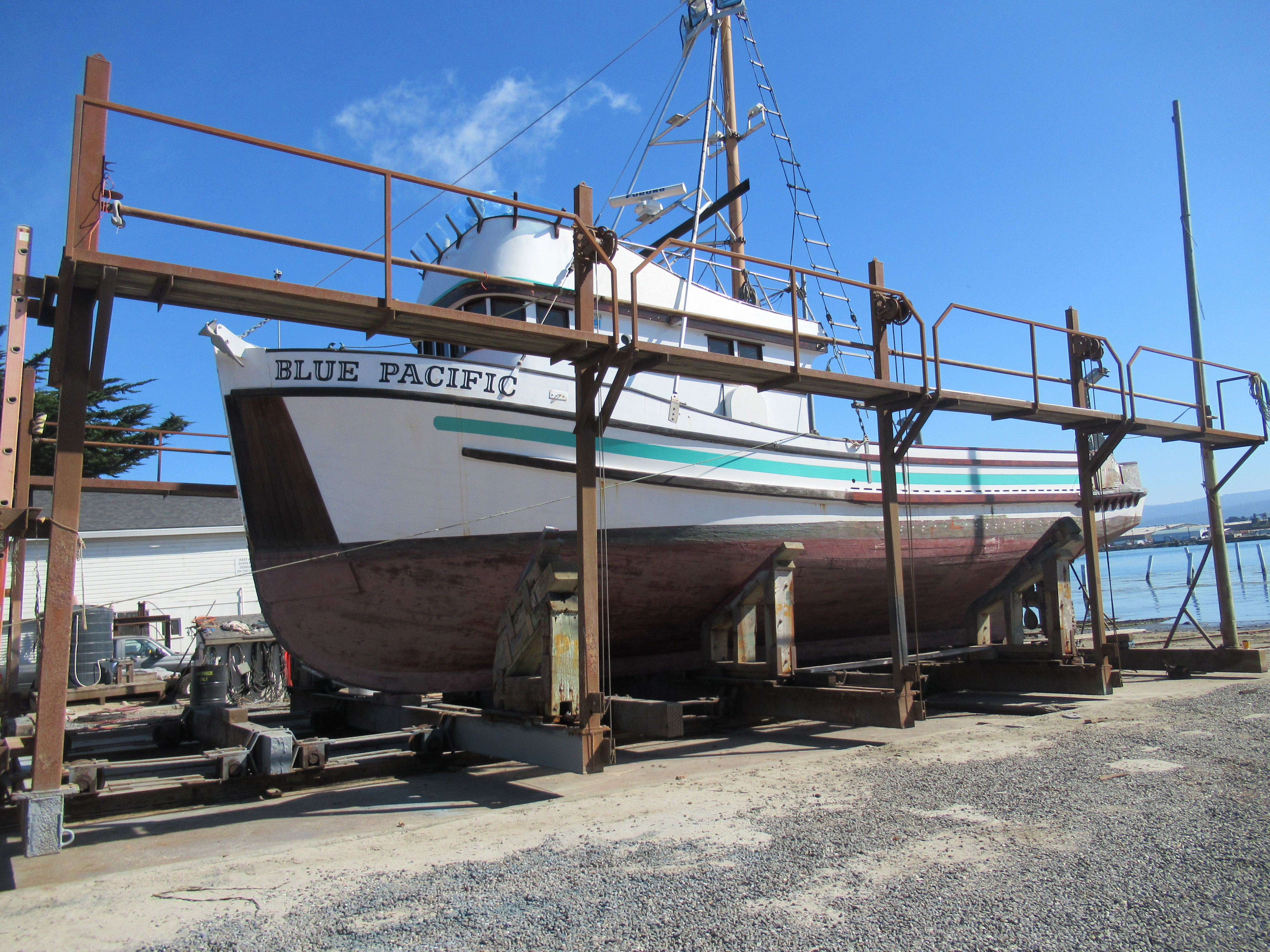David Peterson is a boat carpenter in Eureka, Calif., specializing in repairing wooden fishing boats, like the 54-foot Blue Pacific out of Fort Bragg, Calif., that arrived in Eureka in August.
It’s a boat Peterson is familiar with. When the Blue Pacific was built in 1963, Peterson remembers, as an offer of good luck, putting a Franklin all-silver half-dollar under the Blue Pacific’s mast. This time around, it was all about setting up the Blue Pacific for dragging. She had been a crabber and troller, but the boat’s new owner wanted her rigged for dragging.
That required tearing out and replacing eight rotten ceiling planks in the fish hold, as well as rotten deck beams and decking. Five new Douglas fir 5" x 8" deck beams were covered with 1 5/8-inch laminated Hydrotek plywood decking that was then fiberglassed over. In addition, the trolling pit was torn out, and that area decked over to the stern. A Freeman Marine hatch went in where the trolling pit had been for access to the steering gear.
Once the decking was down, Peterson put stanchions beneath where the winches were going to strengthen the deck. Then he and the boat’s owner installed the winches and leveled them up. The net reel was set up and deck stanchions put in place for the doors. The Blue Pacific left Eureka on Nov. 2 to drag for bottomfish.
Next up is the Genie II, a 32-foot crab boat out of Trinidad, Calif., which had probably come up against a dock, causing fiberglass on the deck to crack. That allowed water to get into the deck and part of the hull, resulting in some rot. The rotten areas have to be cut out and replaced.
Periodically Peterson does something he describes as a lot of fun. It’s guiding a fisherman in the repairing of his own boat. “A lot of the time, they don’t have the bucks and are trying to get the job done,” he says. “I’ll teach them and oversee it. A lot of times it works out pretty good because I don’t have the time to do it (myself).”
In November he was engaged in just such a project on a 42-foot double-ender that was built in the 1940s; all the ribs in the fish hold have to be sistered and some in the stern. Peterson was showing the boat’s owner “how to make templates for the ribs, how to get the ribs cut out and into the boat. I have him do everything,” he says.
Down the coast in Crescent City, Fashion Blacksmith has sponsoned a number of fishing boats over the years, and now some are coming back for a bigger, wider wheelhouse. They have “the same issues, leaky windows and the house is rotting,” says Fashion Blacksmith’s Ted Long. Some are changing from the conventional wheelhouse that you can walk around “to a whaleback or raised fo’c’sle style, where you no longer walk around the house.”
The Mary Lu, a 57' x 25' Dungeness crabber and shrimper out of Crescent City that Fashion Blacksmith sponsoned three years ago, is sticking with the conventional wheelhouse. In November, a replacement wheelhouse with a stainless steel front was being built on Fashion Blacksmith’s shop floor for the Mary Lu. Long describes it as a Texas-style house where the helm station is raised about 3 feet higher than the back of the house, allowing a clear view of the deck from the back window. The house will be installed when the Mary Lu returns from crabbing.

The Gladnik, a combination crabber and tuna boat, was built by Long’s father, Dale Long, and uncle, Roger Long, in 1971. Then four years ago Fashion Blacksmith lengthened and sponsoned her from 60' x 16' to 68' x 25' 6" and added a bulbous bow. Now she’s due in at the end of crab season for a new whaleback pilothouse and repowering. “The original house is typical,” says Long. “It has wastage in it and is getting weaker.”
Another motivator for replacing the wheelhouse is the need to repower the Gladnik. But leaving the original wheelhouse in place and trying to pull the 275-hp GM out the “back bulkhead or sides of the boat is difficult because it has been sponsoned,” noted Long.
Thus the wheelhouse will come off, the Jimmy will be hauled up through the open space and a new 450-hp John Deere will take its place. (The boat’s owner was able to take advantage of California’s Carl Moyer Program, which provides funding to replace an older engine with a new emission certified diesel.)
The new whaleback wheelhouse with a pilothouse on top of it will provide more space below deck in the bow area and better visibility.







.jpg.small.400x400.jpg)